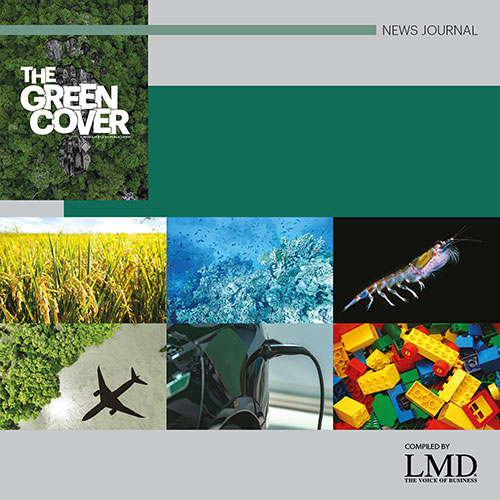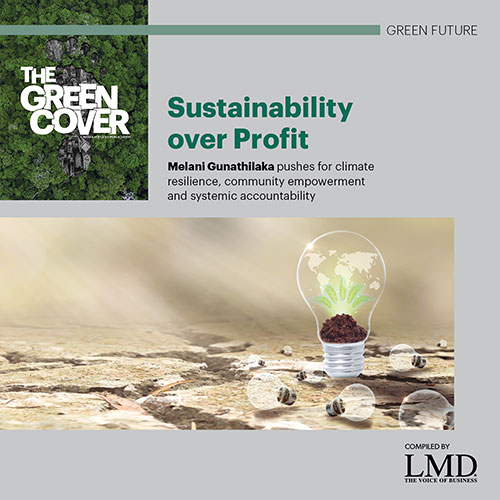FUNDING FOR GREEN PROJECTS
Adheesha Perera urges collaboration and innovation to unlock green economy transition financing

The UN’s Financing for Sustainable Development Report 2024 reveals a staggering annual financing gap of between US$ 2.5 trillion and four trillion for achieving the United Nations’ Sustainable Development Goals (SDGs) in developing countries.
An Institute of Policy Studies of Sri Lanka (IPS) assessment in 2023 estimates an additional US$ 1.4 trillion of public investment is needed for SDGs in education, health, transport, electricity, water and sanitation.

Sri Lanka Banks’ Association’s Sustainable Banking Initiative
Climate Action Steering Committee of the Ceylon Chamber of Commerce
Adheesha Perera, currently engaged with the Sri Lanka Banks’ Association’s Sustainable Banking Initiative and the Climate Action Steering Committee of The Ceylon Chamber of Commerce (CCC), underscores finance’s pivotal role in driving this transition.
Effective resource mobilisation necessitates coordinated efforts across stakeholders spanning the private sector, financial institutions, government and civil society.
Perera stresses: “Financing discussions must consider long-term risks at both organisational and national levels, particularly regarding depletion of productive capacity and competitiveness due to nature loss, climate change and human capital.”
“Tightening regulations in Sri Lanka’s export markets, such as the EU’s Ecodesign for Sustainable Products Regulation and deforestation-free product regulations, require export enterprises to invest in sustainability. The financial services industry must proactively engage with these sectors to align financing with sustainability strategies,” he urges.
Perera adds: “Given vulnerability to recurrent supply-side shocks in fossil fuel availability, collaboration and innovation are crucial to swiftly integrating renewable energy across value chains for enhanced resilience.”
Ongoing initiatives at the national level aim to unlock financing including collaborative efforts to explore establishing a country-level blended finance facility. This platform aims to foster collaboration and innovation, and leverage impact investment to address current investment bottlenecks.
He anticipates that technologies from the Fourth and Fifth Industrial Revolutions are already influencing financial systems, notably in advanced economies. These include decentralised finance platforms operating on blockchain that utilise spatial data and IoT for results-based financing executed through smart contracts.
With Sri Lanka’s financial services industry already exploring sustainability linked instruments and identifying climate and nature-related risks, Perera foresees greater adoption of digital technologies in the medium term.
Considering Sri Lanka’s aspiration to become a regional financial hub, he emphasises increased investment in developing talent pools focused on sustainable and digital finance.
For customers seeking financing, presenting an integrated sustainability strategy in business plans or loan proposals could facilitate access to tailored financial and nonfinancial solutions.
Perera concludes by highlighting the Central Bank of Sri Lanka’s introduction of a Road Map for Sustainable Finance in 2019 and a Green Finance Taxonomy in 2022. These frameworks guide the industry in prioritising green finance activities. Understanding the same could benefit financial services consumers when negotiating with partner institutions.






